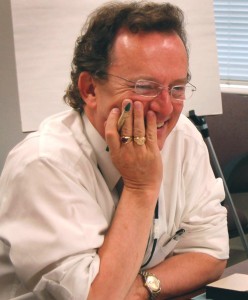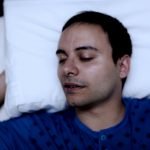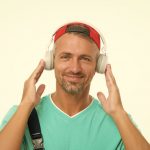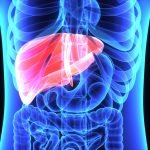Both Sides of Wolfe Street Naturopathic Medicine and Research
David J. Schleich, PhD
I learned much later how very prescient Dr Lois Hare was. It was my second day on the job as the incoming president of the then-tiny CCNM in Toronto, when she called from her clinic in Nova Scotia to talk about the importance of research to the profession. That was 1996. Dr Lois Hare was at that time president of the Canadian Association of Naturopathic Doctors. She called to encourage our fledgling school in Toronto to gear up to train naturopathic students to love and do research. We talked about how bench-, wet lab-, and practice-based research would be as common in naturopathic education as botanical medicine and homeopathy. We just have to get going, she declared. Two decades later, I think of that phone conversation as an important anchor. Research as a dimension of professional education is essential in our strategy and a sustained commitment to systematically demarcate the theory and practice of naturopathic medical knowledge. In this era of “integrative medicine,” knowing who we are is more important than ever.
The energy spinning out into the profession from the growing cohort of theorists, writers, clinicians, teachers, and writers these days is huge compared to late 1996. Such an outpouring happened once before, in the early decades of the last century. In those years, there appeared year after year an abundance of journals, articles, pamphlets, and books expounding on every nook and cranny of naturopathy. After Flexner – the proliferation of legislative and public policy blocking any medical systems not subscribing to the epistemology of biomedicine – the naturopathic profession lost its way in terms of broadly communicating theory and practice. Today’s flowering, though, in the outstanding work of writers, researchers, and teachers, is spreading awareness and understanding of the utility, relevance, and promise of naturopathic medicine. At the same time, these codifying efforts are increasingly validating Naturopathic Medicine as a system, and irreversibly helping authenticate the regulated presence of naturopathic doctors in the North American healthcare landscape.
Many naturopathic scholars assert that the gestalt (or organized whole) of naturopathic medical knowledge is fueled and energized by this work. Overall, the constantly transforming curricula, proliferating research projects, and broader clinical service have made for momentum the likes of which we haven’t seen since the early days of Benedict Lust. There are debates and conversations about what defines naturopathy in the modern era. A recurrent conversation, for example, centers on biomedical knowledge, which the allopathic professions have unilaterally appropriated as their own. What place, for example, do the non-material elements in health outcomes have in an epistemology of naturopathic medicine? No one doubts that this dialogue is largely theoretical, despite its pragmatic manifestations, in that it comprises the knowledge and research conjugated through fields such as human and veterinary medicine, and odontology (to name a few), as well as through fundamental biosciences including biochemistry, biology, chemistry, embryology, histology, genetics, pathology, microbiology, botanics, and so on.
The Biomedicine Research Agenda
The historical record, however, also demonstrates that biomedicine is less concerned than we are about an epistemology of medicine being about the whole of human health (and the health of the planet) being greater than the sum of its parts. Biomedicine research invariably is more focused on the theory, knowledge, and research of medicine, than on the actual practice of medicine, much less on its philosophical assumptions. For example, these days as “biologics” (that is, giant molecules manufactured inside animal cells or microorganisms) replace the conventional, small-molecule drugs with all their vicious side effects, the importance of naturopathic medical research is more valuable than ever. In our era, the so-called “patent cliff” is getting crowded and as the costs of new drug approaches, such as the biologics one, will make natural medicine approaches increasingly attractive if they can be communicated in language and with data ensconced in research.
Even as 20th century pharmaceutical companies proliferated simple compounds (along with their wretched side-effects), naturopathic doctors frequently report that their biomedicine counterparts didn’t question the paradigm of their own medical model, maintaining that their medicine was properly focused on establishing potential new drugs or on deeper, molecular understanding of the mechanisms of underlying disease. It is a matter of historical record that the AMA and the pharmaceutical industry both vigorously opposed the FDA’s determination in the early 1960s to require exhaustive research and testing before permitting another thalidomide fiasco. The biomedicine and pharmaceutical communities berated the work of Dr Frances Kelsey, but her insistence on exacting science to assure regulatory decision-making eventually led to the Kefauver-Harris amendments to the Federal Food, Drug and Cosmetic Act. This event, a half-century after Flexner, indicates the undulating history of biomedicine’s own declaration of its embrace of science. To this day, allopathic declarations about evidenced-based medicine are the vanguard defense of a social policy and economic track record in conflict. Research in our time has strengthened this allopathic professional dominance, despite such disasters (especially in Europe) of careless, thalidomide prescribing and the anguish of contemporary iatrogenesis. Research, then, supports the biomedicine industry’s certainty that its privilege and practice should remain for all time the foundation of all medical application, diagnosis, and treatment. Our detractors, though, are increasingly surprised not only by how much research we do, but by how much we know, and by how little they’ve known about what we know. Their platform of science and research, dramatically co-opted a long time back, is not actually theirs to control and boast about.
Baer (2001) reminds us that biomedicine is the heterodox version of a medical system which he labels the “American dominative medical model.” Biomedicine is used to being socially, economically, and politically positioned for control in our time; however, those who consider the terrain of knowledge upon which any system is constructed, are not immune from the social anthropologists, historians, and political scientists among us who are looking more closely at the durability of any one group’s assumptions. That a dominant group can be ascendant in one generation and toast the next, is not without precedent. The data, especially in the United States, which report unequivocally the utter failure of biomedicine to sustain a healthy society, are part of the reason why integrative medicine marketing is expanding so rapidly. In this regard, there are numerous academic conversations – which we are now a part of, more than ever – which are all about the epistemology of naturopathic medicine (what do we know, how do we know what we know, and from what perspectives are we forming conclusions about what we know?). It behooves us to learn more about the role naturopathic research plays in this essential aspect of professional formation in our time.
Myths About the Essential Role of Science in Medicine
For example, some social scientists and medical historians have looked into the theories of knowledge which underlie professions or disciplines, and challenge some assumptions and certitudes. As a case in point, Power (2000) at the time surprisingly asserted, “Rarely questioned [is] the idea of science as essential to medicine.” Actually, there are earlier scholars who raised this very point, such as Wetzler – whose poignant 1984 study with respect to the dominant position of science in the study and practice of medicine, and whose arguments and conclusions resonated with the very few naturopathic doctors at the time who were able to engage in the research community – pointed out that there are numerous “myths” which are present in an epistemology that positions science dead-center in the validation of a medical system. His list includes the following:
- the myth that educational processes are inherently beneficial
- the myth of the basic sciences or “physico-chemico-reductionism”
- the myth of excellence, in which standards are supposedly maintained by dubious, or at least questionable, educational methods and means of assessment
- the myth of the false foundations (that no student can possibly deal with a clinical problem unless s/he has studied “all the basic sciences”)
(Wetzler, 1984, p.135)
While it is the topic of another discussion to elaborate on the medical educational processes to which Wetzler alludes, by way of comparison with some commentaries about biomedicine and the allopathic world, Richenda Power (2000) provided over a decade ago a remarkable compendium of definitions associated with the “art” and “science” of “holistic medicine” in her book A Question of Knowledge (2000). The juxtaposition of these commentaries about the primacy of “science” in theories of knowledge attached to specific medical systems, separated by almost 20 years, is quite instructive for us as we contemplate an epistemology of naturopathic medicine. Whereas Wetzler challenged the unquestioned centrality of science in the study and practice of mainstream, western medicine, delighting naturopathic thinkers of that era who were attending to the literature of professional formation (eg, Gort, 1986; Boon, 1995, 1996), Power found “few statements that contained direct claims for holistic medicine being an art” (p.128), but rather discovered a much larger “representation” of material on the “science” of holistic medicine. She points out, though, that such material was invariably “used as powerful symbolic capital in political struggles between groups of health workers” (p.129).
This academic conversation constitutes a kind of social-scientific debate and includes reports of statements such as: there is knowledge other than the scientific; we need a new form of science and medicine; instinctive common sense and experience are good enough; and medicine is not scientific, anyway (Power, 2000).
Such discourse has been occurring for many decades among naturopathic doctors, and these days, more than ever, among naturopathic researchers.
Even with this debate in mind, and knowing that the mantra of EBM (evidence-based medicine) is all around them, naturopathic doctors are most focused on primary prevention, ie, making people more resistant to infection and illness, and slowing the progress of a particular disease via education, good food, supplements, and mind/body alignment techniques such as meditation and stress reduction. The allopathic (or biomedicine) doctor, the argument goes, tends to have a different beginning point with patients and fewer tools for long-term wellness.
The Centrality of Holism in Naturopathic Medicine
A principle value of the naturopathic profession has been a profound belief in holism. The reductionism of biomedicine generated questions about the unassailable position of science in health design and delivery, and also in the education of doctors. Relevant here is the work of Wetzler (1984), and the earlier work of Leavall and Clark (1965) and Adler and Shuval (1978). Citing them, Carpenter (1997, p. 43) notes, when discussing the education of professionals, that medical students report feeling “subject to negative pressures concerning the scientific element in medical training” during their studies. As their training progresses, he explains, the very “centrality of science for medical practice” is of decreasing importance “for the competent physician.” He explains, though, that at the core of scientific medicine are techniques not anathema to naturopathic medicine, such as inspection, palpation, percussion, and auscultation.
The naturopathic doctor routinely looks, touches, and listens more than the allopathic doctor. Each, though, has lab tests and instruments to help do the work of physical and clinical diagnosis. Indeed, these similarities have been true from the days of Frederick Gates and William Osler, who anticipated a time when all medicine, natural or scientific, could be “reduced to an exact science” (Bliss, 1999). Osler was declaring late in the 19th century in his book, The Principles and Practice of Medicine (1892), that the rigor which he and others felt must accompany “scientific” medicine, including a protracted commitment to research, was frequently not present in such fields as naturopathy, homeopathy, and osteopathy. That was then.
Osler contended that “medicine must rest on science” (Bliss, 1999). Osler as a clinical physician wanted a scientific underpinning to “working at the bedside,” focused on the “whole patient,” not unlike the naturopathic physician who is trained to develop a relationship with the patient which includes a comprehensive awareness of the person’s complete physical, spiritual, and mental makeup. Boon (1995, 1996), and Gort (1986) before her, have identified the contemporary manifestations of this tension between holistic and scientific practitioners, and indeed between holistic and scientific naturopathic practitioners. The holistic practitioner’s spiritual and physical words are “not separate, but manifestations of a single life force” (Boon, 1996). Consequently, symptoms – whether physical or spiritual – command the same attention. Their scientific counterparts, however, to iterate the epistemology, practice based on a biomedical model, which reduces all pathology to a cellular or molecular level. For the latter, the scientific method is the route to curing a disease. For the former, environment and spiritual balance are key factors in a treatment protocol.
As Schon reports (1987), though, despite the philosophical paradigm of any one group’s location in either an orthodox or an heterodox medical system, “the greater one’s proximity to basic science, the higher one’s academic status” (p.55). Professional schools of medicine, in such a context and within such an epistemology, would strive to train healers and socialize them as biotechnical problem-solvers. Routinely, they would follow a sequence that immersed the student in medical science and then in supervised clinical practice. Glazer (1974) describes this approach as a “yearning for the rigor of science-based knowledge and the power of science-based technique.” This fascinating polarity hugely influenced the development of naturopathic medical education in North America. The existence of a distinct tension between professional orientation [itself not consistent across the profession and often regionally diverse] and student socialization has been discussed from a somewhat different perspective by Boon (1996) in her analysis of the scientific and holistic world views of both students and practitioners.
Gieryn’s (1983) discussion about the practical problem of constructing some kind of boundary between science and “varieties of non-science” is an important theoretical discussion about the claims to authority which science insists upon. Naturopathic physicians and their teachers seem attracted to such a source of authority, but define their eclectic professional therapies inside and outside such boundaries. There are even continuing claims that the profession has not embarked on rigorous research about key modality areas in its repertoire, such as individualized nutritional therapy (Vickers & Zollman, 1999) or chronic diseases, in general (Haynes, 1999). A persistent equivocation in the broader field of clinical practice and the continuing influence of practitioners on their educational institution’s priorities have influenced the development of the profession and those very educational institutions which prepare them for practice in a growing number of regulated states and provinces.
A Research Agenda for Naturopathic Medicine
The naturopathic profession’s enduring reputation for high-touch patient care, now coupled with a growing respect for the importance of research, has been around a long time. The biomedicine industry is taking notice because its reputation is eroding its dominance. For example, a national consortium of medical research institutions, funded through a US-based organization called Clinical and Translational Science Awards (CTSAs), has goals which look very familiar to those of the naturopathic research community:
- Support a more inclusive medical research agenda
- Improve the way medical research is conducted across the country
- Reduce the time it takes for laboratory discoveries to become treatments for patients
- Engage communities in clinical research efforts
- Train the next generation of clinical and translational researchers
The biomedicine health industry, with its improperly labeled “non-profit” hospitals and appropriately labeled “for profit” suppliers in the United States, has an appalling track record and reputation for vulgar prices and margins that comprise the engines of a well-oiled revenue monolith. Whether it’s because the ACA intends equal shelf-time for all providers, or that the new insurance exchanges are slowing the abuses of the reimbursement monopoly, naturopathic medicine is more visibly at the table in this debate about cost and effectiveness. Naturopathic researchers are known widely for their interest in advancing natural medicine in ways not aimed at monetizing every wiggle of health promotion. They grapple with the slow journey from “basic science” discovery through to “adoption.” Naturopathic researchers understand very well the dangers and the opportunities here. They are doing something about sustaining a research agenda, just as Dr Hare envisioned.
Table 1. The Translational Continuum
| Basic Sciences Discovery | Early Translation | Late Translation | Dissemination | Adoption |
| Promising molecule advance or gene target | Partnerships and collaboration (academia, government, industry) | Phase III trials | (New drug, assay, device, behavioral intervention, educational materials, training) | Adoption of advance by providers, patients, public |
| Candidate protein biomarker | Intervention development | Regulatory approval | To community health providers | Payment mechanism(s) in place to enable adoption |
| Basic epidemiologic finding | Phase I, II trials | Partnerships | To patients and public | |
| Production and commercialization | ||||
| Phase IV trials – approval for additional uses | ||||
| Payment mechanism(s) established to support adoption | ||||
| Health services research to support dissemination and adoption |
(From the President’s Cancer Panel 2004-2005 report, Translating Research into Cancer Care; Delivering on the Promise)
Robert Duggan, cofounder of Tai Sofia – now the Maryland University of Integrative Health – captured the important reality of the institutional and professional duality which has contributed so profoundly to the challenge of professional formation for naturopathy, but which quest of late is shifting inexorably. He wrote 20 years ago:
In Baltimore, Wolfe St. runs between two groups of buildings: The Johns Hopkins Medical School on one side of the street, representing the finest in medical skill and technology, and the Johns Hopkins School of Public Health on the other, symbolizing a humanistic, community-based approach to healthcare. When differences between the two schools were more pronounced than they are now, people joked that Wolfe Street was the widest in the world. Our culture needs a blend of what’s on both sides of that street.
(Duggan, 1995, p.241)
 David J. Schleich, PhD, is president and CEO of NCNM, former president of Truestar Health, and former CEO and president of CCNM, where he served from 1996 to 2003. Previous posts have included appointments as vice president academic of Niagara College, and administrative and teaching positions at St. Lawrence College, Swinburne University (Australia) and the University of Alberta. His academic credentials have been earned from the University of Western Ontario (BA), the University of Alberta (MA), Queen’s University (BEd), and the University of Toronto (PhD).
David J. Schleich, PhD, is president and CEO of NCNM, former president of Truestar Health, and former CEO and president of CCNM, where he served from 1996 to 2003. Previous posts have included appointments as vice president academic of Niagara College, and administrative and teaching positions at St. Lawrence College, Swinburne University (Australia) and the University of Alberta. His academic credentials have been earned from the University of Western Ontario (BA), the University of Alberta (MA), Queen’s University (BEd), and the University of Toronto (PhD).
References:
Adler, J. & J.T. Shuval. (1978). Cross pressures during socialization for medicine. American Sociological Review, 43(5), 693-704.
Baer, H.A. (2001). Biomedicine and Alternative Healing Systems in America: Issues of Class, Race, Ethnicity and Gender. Madison, WI: University of Wisconsin Press.
Bliss, M. (1999). William Osler: A Life in Medicine. Toronto, Ontario: University of Toronto Press.
Boon, H. (1995). The making of a naturopathic practitioner: the education of alternative practitioners. Health and Canadian Society, 3(1/2), 15-41.
Boon, H. (1996). Canadian Naturopathic Practitioners: The Effects of Holistic and Scientific World Views on Their Socialization Experiences and Practice Patterns. PhD Thesis, University of Toronto.
Carpenter, P. (1997). The education of professionals. Education and Society, 4(1), 38-51.
Duggan, R. M. (1995). Complementary Medicine: Transforming Influence of Footnote to History? Alternative Therapies, 1(2), 28-32.
Glazer, N. 1974. The schools of the minor professions. Minerva, 12(3), 346-363.
Gieryn, T.F. 1983. Boundary-work and the demarcation of science from non-science: strains and interests in professional ideologies of scientists. American Sociological Review, 48, 781-795.
Gort, E. (1986). A Social History of Naturopathy in Ontario: The Formation of an Occupation. MSc Thesis, Division of Community Health, University of Toronto.
Haynes, R.B. (1999) Commentary – A warning to complementary practitioners: get empirical or else. BMJ, 319(7225), 1632.
Leavall, H.R. & Clark, E.G. (1965). Preventive Medicine for the Doctor in His Community. New York, NY: McGraw-Hill.
Osler, W. (1885). The growth of a profession. Canada Medical & Surgical Journal, 14, 129-155.
Osler, W. (1893, c. 1892). The Principles and Practice of Medicine. New York, NY: D. Appleton and Co.
Power, R. (2000). A Question of Knowledge. New York, NY: Routledge.
Schon, D. (1987). Educating the Reflective Practitioner. San Francisco, CA: Jossey-Bass Publishers.
Vickers, A. & Zollman, C. (1999). ABC of Complementary Medicine. Unconventional approaches to nutritional medicine. BMJ, 319(7222), 1419-1422.
Wetzler, M. (1984). Holistic aspects to medical training. British Journal of Holistic Medicine, April, 55-62.
http://buywithoutprescriptiononlinerx.net/clomid.html







